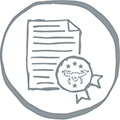
EASA COMPLIANCE & AUTHORISATIONS
Swiss Aviation Consulting is committed to support you complying with the recent regulations for drones’ operations.
To ensure the free circulation of drones and a level playing field within the European Union, EASA has developed common European rules. The approach taken is to apply the highest safety standards achieved in manned aviation to drones as well. The rules are based on an assessment of the risk of operation, and strike a balance between the obligations of drone manufacturers and operators in terms of safety, respect for privacy, the environment, protection against noise, and security.
EU Regulations 2019/947 and 2019/945 set the framework for the safe operation of drones in European skies (EU and EASA Member States). They adopt a risk-based approach, and as such, do not distinguish between leisure or commercial activities. They take into account the weight and specifications of the drone and the operation it is intended to undertake.
EU Regulation 2019/947, which are fully applicable from December 30, 2020, caters for most types of operation and their levels of risk. It defines three categories of operations: the ‘open’, ‘specific’ and ‘certified’ categories.
- The ‘open’ category addresses operations in the lower risk bracket. This category is subdivided into three further subcategories called A1, A2 and A3. No authorisation is required before starting a flight.
- The ‘specific’ category covers riskier operations, where safety is ensured by the drone operator obtaining an operational authorisation from the national competent authority before starting the operation.
- In the ‘certified’ category, the safety risk is so high that certification of the drone operator and the aircraft is required to ensure safety, as well as the licensing of the remote pilot(s).
The management of traffic for drones will be ensured through the U-space.
U-space is another arm of the drones’ regulatory framework. It creates and harmonises the necessary conditions for manned and unmanned aircraft to operate safely in the U-space airspace, so as to prevent collisions between aircraft and to mitigate the air and ground risks.
How to be compliant as of December 31, 2020?
Your first step as drone operator/ remote pilot will be to register in the country in which you live, or have your main place of business. Your second step is to ensure that you, as drone operator or remote pilot are aware of the rules and risk connected with the operation. The drone operator is the person registered and is responsible for the operation. The remote pilot is the person that actually controls the drone. The remote pilot must have the appropriate training for the operation to be conducted. Last, but not least, check with your NAA where you are authorised to fly and where you need to have a specific (geographical) authorization.
